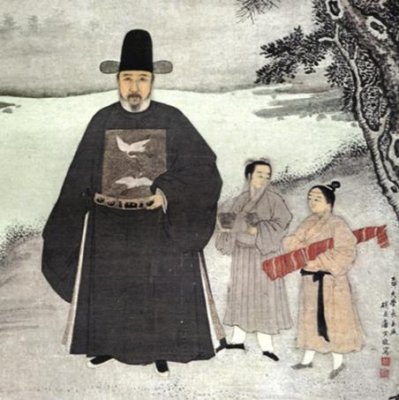Ming Dynasty Clothing
 Clothing in the Ming Dynasty, which ruled China from 1368 to 1644, was strongly based on traditional styles. Many of these have endured and are still considered to be essential characteristics of Chinese dress and style today.
Clothing in the Ming Dynasty, which ruled China from 1368 to 1644, was strongly based on traditional styles. Many of these have endured and are still considered to be essential characteristics of Chinese dress and style today.
An emphasis was placed on visual impact, with magnificent garments being worn by the richer classes. However, it was considered vulgar to take this to excess: a graceful, flowing look was considered to be the height of sartorial elegance.
Men's and Women's Clothing
For men, most Ming Dynasty garments were characterized by the use of circular collars and wide sleeves. It was also the usual practice for men to wear a head covering similar to a modern chador. Black silk ribbons and a drooping strap were usually added.
Men frequently wore tunics, which were knee length with relatively short sleeves. The finest clothing was made of silk, which was seen as a symbol of status and wealth. Since many Ming garments were rather thin, padded over-jackets were worn during the colder months.
Women's garments had narrow sleeves and three collars, together with pleated skirts. These were something of an innovation at the time. Color preference was for lighter shades, especially in the early part of the period. Women also wore intricately embroidered capes over their shoulders.
Accessories and Proportions
The use of buttons increased in clothing during the Ming Dynasty, with those of a circular shape becoming increasingly popular as time went on. The fashion also became for buttons to be made of metal rather than alternatives such as ivory or jade.
The Song Dynasty of a century earlier was characterized by symmetrical collars, but in the Ming period, these became circular. Skirts were worn so as to show only a small part of their length, thanks to the popularization of long over-jackets. Many of these styles remained in ordinary use until the start of the modernization of China during the Qing Dynasty.
